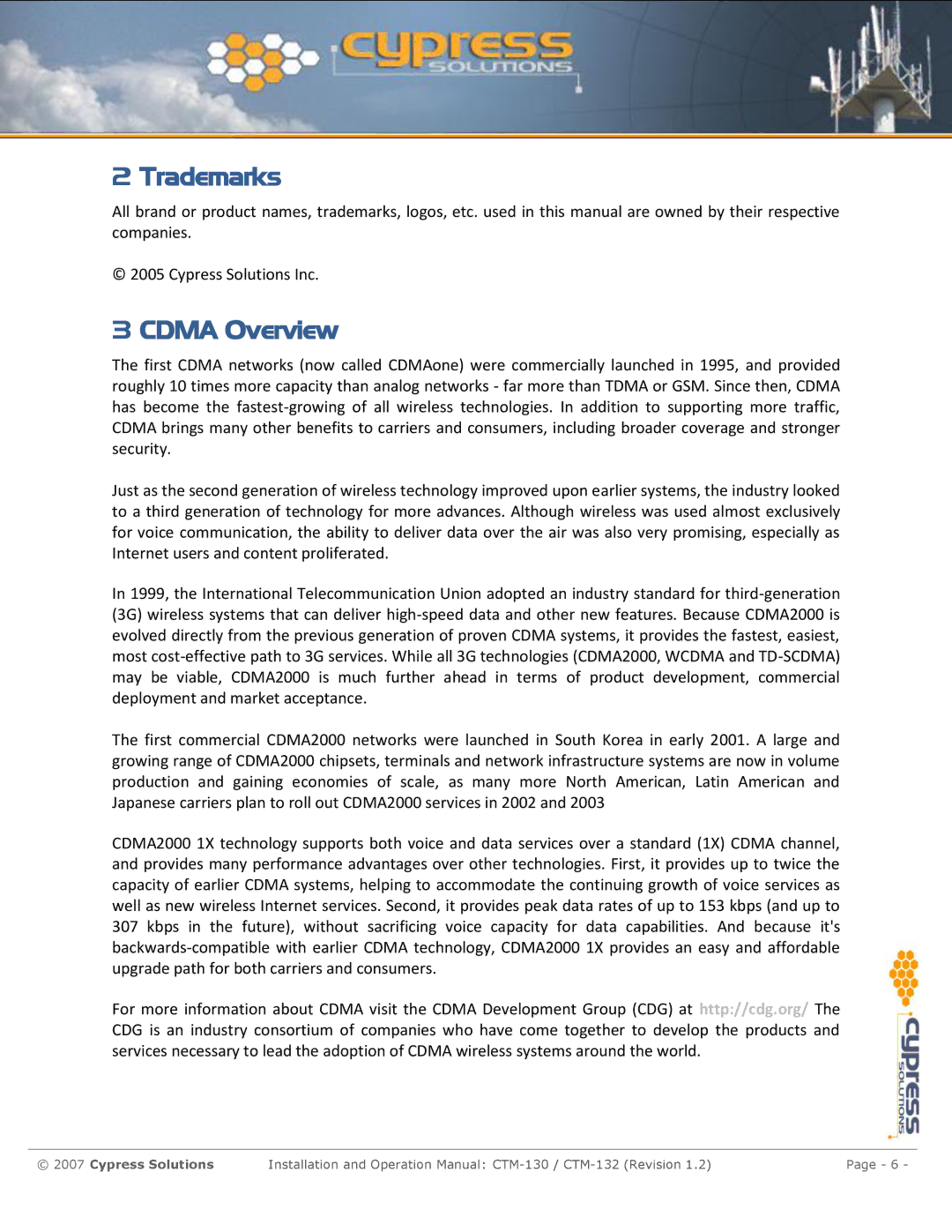
2Trademarks
All brand or product names, trademarks, logos, etc. used in this manual are owned by their respective companies.
© 2005 Cypress Solutions Inc.
3 CDMA Overview
The first CDMA networks (now called CDMAone) were commercially launched in 1995, and provided roughly 10 times more capacity than analog networks - far more than TDMA or GSM. Since then, CDMA has become the
Just as the second generation of wireless technology improved upon earlier systems, the industry looked to a third generation of technology for more advances. Although wireless was used almost exclusively for voice communication, the ability to deliver data over the air was also very promising, especially as Internet users and content proliferated.
In 1999, the International Telecommunication Union adopted an industry standard for
The first commercial CDMA2000 networks were launched in South Korea in early 2001. A large and growing range of CDMA2000 chipsets, terminals and network infrastructure systems are now in volume production and gaining economies of scale, as many more North American, Latin American and Japanese carriers plan to roll out CDMA2000 services in 2002 and 2003
CDMA2000 1X technology supports both voice and data services over a standard (1X) CDMA channel, and provides many performance advantages over other technologies. First, it provides up to twice the capacity of earlier CDMA systems, helping to accommodate the continuing growth of voice services as well as new wireless Internet services. Second, it provides peak data rates of up to 153 kbps (and up to 307 kbps in the future), without sacrificing voice capacity for data capabilities. And because it's
For more information about CDMA visit the CDMA Development Group (CDG) at http://cdg.org/ The CDG is an industry consortium of companies who have come together to develop the products and services necessary to lead the adoption of CDMA wireless systems around the world.
© 2007 Cypress Solutions | Installation and Operation Manual: | Page - 6 - |
